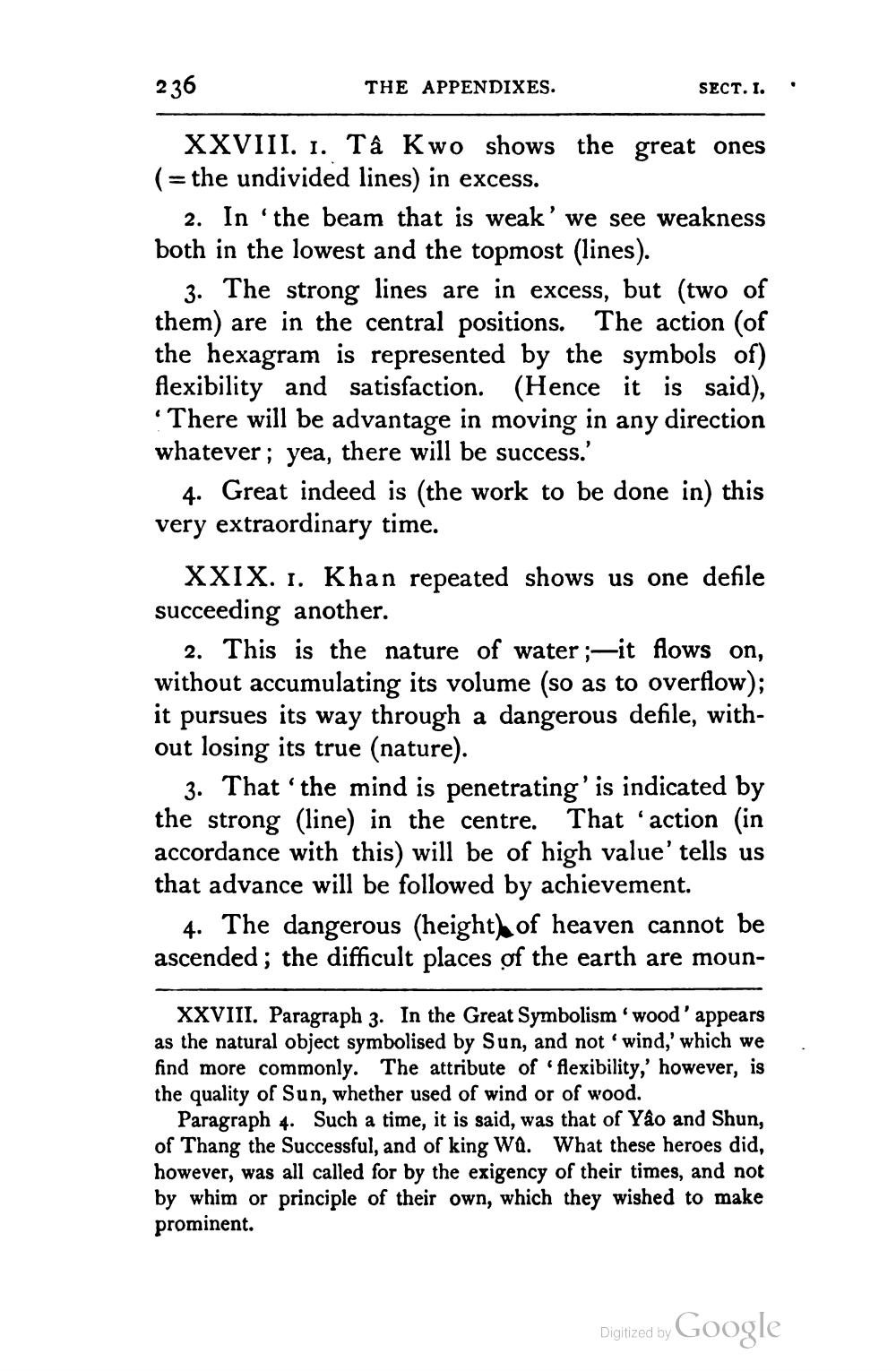________________
236
THE APPENDIXES.
SECT. I.
.
XXVIII. 1. Tá Kwo shows the great ones ( = the undivided lines) in excess.
2. In the beam that is weak' we see weakness both in the lowest and the topmost (lines).
3. The strong lines are in excess, but (two of them) are in the central positions. The action (of the hexagram is represented by the symbols of) flexibility and satisfaction. (Hence it is said), • There will be advantage in moving in any direction whatever; yea, there will be success.'
4. Great indeed is (the work to be done in) this very extraordinary time.
XXIX. 1. Khan repeated shows us one defile succeeding another.
2. This is the nature of water ;-it flows on, without accumulating its volume (so as to overflow); it pursues its way through a dangerous defile, without losing its true (nature).
3. That the mind is penetrating'is indicated by the strong (line) in the centre. That 'action (in accordance with this) will be of high value' tells us that advance will be followed by achievement.
4. The dangerous (height of heaven cannot be ascended; the difficult places of the earth are moun
XXVIII. Paragraph 3. In the Great Symbolism wood' appears as the natural object symbolised by Sun, and not wind,' which we find more commonly. The attribute of flexibility,' however, is the quality of Sun, whether used of wind or of wood.
Paragraph 4. Such a time, it is said, was that of Yao and Shun, of Thang the Successful, and of king Wů. What these heroes did, however, was all called for by the exigency of their times, and not by whim or principle of their own, which they wished to make prominent.
Digitized by Google




